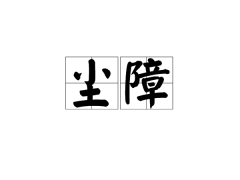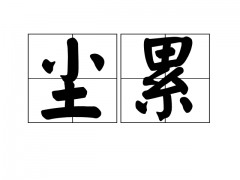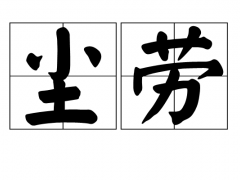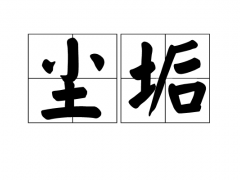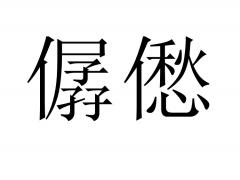关于数字的英语单词
关于数字的英语单词在英语的写作中可是经常用到的,下面我为大家带来了关于数字的英语单词,欢迎大家阅读,希望能够帮助到大家。

一、 数词的分类
1 基数词
表示数目的词称为基数词。其形式如下:
A.从1——10
one,two,three,four,five,six,seven,eight,nine,ten.
B.从 11——19
eleven,twelve, thirteen, fourteen, fifteen, sixteen, seventeen,eighteen, nineteen.
这里除 eleven, twelve, thirteen, fifteen, eighteen为特殊形式外,fourteen,sixteen,seventeen,nineteen都是由其个位数形式后添加后缀-teen构成。
C.从 21——99
整数几十中除twenty,thirty, forty,fifty,eighty为特殊形式外,sixty,seventy,ninety都是其个位数形式后添加后缀-ty构成。表示几十几时,在几十和个位基数词形式之间添加连字符“-”
21 twenty-one
76 seventy-six
D.百位数
个数基数词形式加“hundred”,表示几百,在几十几与百位间加上and.
101 a hundred and one
320 three hundred and twenty
648 six hundred and forty-eight
E.千位数以上
从数字的右端向左端数起,每三位数加一个逗号“,”。从右开始,第一个“,”前的数字后添加 thousand,第二个“,”前面的数字后添加 million,第三个“,”前的数字后添加 billion。然后一节一节分别表示,两个逗号之间最大的数为百位数形式。
2,648 two thousand six hundred and forty-eight
16,250,064 sixteen million two hundred and fifty thousand sixty-four
5,237,166,234 five billion,two hundred and thirty-seven million,one hundred and sixty-six thousand,two hundred and thirty-four
F.基数词在表示确切的数字时,不能使用百、千、百万、十亿的复数形式;但是,当基数词表示不确切数字,如成百、成千上万,三三两两时,基数词则以复数形式出现。
There are hundreds of people in the hall.
大厅里有数以百计的人。
Thousands and thousands of people come to visit the Museum of Qin Terra-Cotta Warriors and Horses every day.
每天有成千上万的人来参观秦兵马涌博物馆。
They went to the theatre in twos and threes.
他们三三两两地来到了剧院。
G.表示人的不确切岁数或年代,用几十的复数形式表示。
He became a professor in his thirties.
他三十多岁时成为了教授。
She died of lung cancer in forties.
她四十来岁时死于肺癌。
It was in the 1960s.
那是在二十世纪六十年代。
H.基数词的句法功能
基数词在句中可作主语、宾语、定语、表语、同位语。
The two happily opened the box.
两个人高兴地打开了盒子。(作主语)
I need three altogether.
我总共需要三个。(作宾语)
Four students are playing volleyball outside.
四个学生在外面打排球。(作定语)
We are sixtteen.
我们是16个人。(作表语)
They three tried to finish the task before sunset.
他们三个人尽力想在日落前完成任务。(作同位语)
2 序数词
表示顺序的词称为序数词。序数词的主要形式:
A.从第一至第十九
其中,one— first, two— second, three— third, five— fifth,eight—eighth,nine—ninth,twelve— twelfth为特殊形式,其它的序数词都是由其相对应的基数词后面添加“th”构成。例如: six— sixth、nineteen— nineteenth.
B.从第二十至第九十九
整数第几十的形式由其对应的基数词改变结尾字母y为i,再加“eth”构成。
twenty——twentieth thirty——thirtieth
表示第几十几时,用几十的基数词形式加上连字符“-”和个位序数词形式一起表示。
thirty-first 第三十一
fifty-sixth 第五十六
seventy-third 第七十三
ninety-ninth 第九十九
C.第一百以上的多位序数词
由基数词的形式变结尾部分为序数词形式来表示。
one hundred and twenty-first 第一百二十一
one thousand,three hundred and twentieth 第一千三百二十
D.序数词的缩写形式
有时,序数词可以用缩写形式来表示。主要缩写形式有。
first——lst second——2nd third——3rd
fourth——4th sixth——6th twentieth——20th
twenty-third——23rd
其中lst,2nd,3rd为特殊形式,其它的都是阿拉伯数字后加上th。
E.序数词的句法功能
序数词在句中可作主语、宾语、定语和表语。
The second is what I really need.
第二个是我真正需要的。(作主语)
He choose the second.
他挑选了第二个。(作宾语)
We are to carry out the first plan.
我们将执行第一个计划。(作定语)
She is the second in our class.在我们班她是第二名。(作表语)
注:序数词在使用时,通常前面要加定冠词 the;但是如果序数词前出现不定冠词a或an时,则表示“再——”,“又——”。
We''ll go over it a second time.
我们得再念第二遍。
We''ve tried it three times.Must we try it a fourth time
我们已经试过三遍了,还必须试一次(第四次)吗?
另外,基数词也可以表示顺序。只需将基数词放在它所修饰的名词之后即可,不需要添加定冠词。
the first lesson——Lesson One
the fifth page——Page 5(five)
the twenty-first room——Room 21(twenty-one)
2 英语数量词大全
二、时刻表示法
1 表示几点钟用基数词加可以省略的`o''clock
5:00 读作 five o''clock 或 five
2 表示几点过几分,在分钟后加past,再加小时
five past seven 七点过五分
half past six 六点半
a quarter past eight 八点过一刻
seven past eight 八点过七分
3 表示几点差几分,在分钟后面加to,再加小时
ten to eight 差十分八点(七点五十分)
a quarter to twelve 差一刻十二点(十一点四十五分)
twenty to six 差二十分六点(五点四十分)
在日常生活中,常用下列简单方法表示时间。
以小时、分种为单位分别读出数字。
6:31 读作 six thirty-one
10:26读作 ten twenty-six
14:03 读作 fourteen o three
16:15 读作 sixteen fifteen
18:30 读作 eighteen thirty
23:55 读作 twenty-three fifty-five
注:时刻表上的时间大多采用24小时表示法,这样就不需要用am表示上午,pm表示下午了
3 英语数量词大全
三、年月表示法
1 世纪可以用定冠词加序数词加世纪century表示,也可以用定冠词加百位进数加''s表示
the sixth(6th)century 公元六世纪
the eighteenth(18th)century 公元十八世纪
the 1900''s 二十世纪
the 1600''s 十七世纪
这里,用百位数整数表示的世纪比这一百位阿拉伯数字本身多一个世纪。
2 年代用定冠词及基数词表示的世纪加十位整数的复数形式构成
in the 1930''s(in the thirties of the twentieth century或 in the nineteen thirties)
在二十世纪三十年代
in the 1860''s(in the sixties of the 19th century或 in the eighteen sixties)
在十九世纪六十年代
In the 1870''s when Marx was already in his fifties,he found it important to study the situation in Russia,so he began to learn Russian.
在十九世纪七十年代当马克思已经五十多岁时,他发现研究俄国的形势很重要,便开始学习俄语。
3 表示某年代的早期、中期和晚期,可以在定冠词后,年代前添加 early,mid-,late
in the early 1920''s 在二十世纪二十年代早期
in the mid-1950''s 在二十世纪五十年代中期
4 年月日表示法
A.年份用基数词表示,一般写为阿拉伯数字,读时可以以hundred为单位,也可以以世纪、年代为单位分别来读。
1949 读作 nineteen hundred and forty-nine 或 nineteen forty-nine
1800 读作 eighteen hundred
253 读作 two hundred and fifty-three或two fifty-three
1902 读作 nineteen hundred and two或 nineteen o two
表示在哪一年,一般在年数前加介词in,使用year时,year放在数词之前。
in the year two fifty-three BC 在公元前253年
但是,通常采用in加表示年份的阿拉伯数字。
B 月份,在哪个月用介词in加第一个字母大写的月份词表示。例如:in May在五月; in July在七月。为了简便起见,月份与日期连用时,月份常用缩写形式表示。缩写形式除May,June,July外,其它的月份都由其前三个字母表示,但 September除外。
January——Jan.一月 February——Feb.二月
March——Mar 三月 April——Apr.四月
August——Aug.八月
September——Sept.九月
October——Oct.十月
November——Nov.十一月
December——Dec.十二月
注:这里缩写形式后面加点不能省略,因为它是表示缩写形式的符号。
C.日期用定冠词the加序数词表示。在哪一天要添加介词on。
National Day is on Oct 1
国庆节是十月一日。(读作 October first)
此句也可以表示为 National Day is on the 1st of October.
May 5 五月五日(读作May fifth)
也可以表示为the fifth(5th)of May
Mar 1(st) 三月一日(读作March first或 the first of March)
5 表示不具体、不确切的时间,如世纪、年代、年份、月份时,用介词in表示,表示具体确切的某一天用介词on表示通常情况下 morning,afternoon,evening等词前用介词in。但是,当这些词前后有一修饰限定的词作为定语,把它们限定为某一天早晨、下午或晚上时,介词in应改为on。这里的修饰限定词可以是介词短语、名词、形容词、定语从句等。
On a cold morning,the old man died lonely in his house.
在一个寒冷的早晨,这个老人孤独地死在自己的房子里。
I don''t want to be disturbed on nights when I have to study.
我不愿意在我必须学习的晚上被打扰。
The accident happened on the afternoon of July 7.
这次事故发生在7月7日下午。
We are to have a small test on Monday morning.
星期一早晨我们将进行一次小测验。
;数字用英语怎么念
数字是我们在开始学习英语时,最基础的一个知识点。下面是我给大家整理的数字的英文是什么,供大家参阅!
数字的英文是什么number
英 [ˈnʌmbə(r)] 美 [ˈnʌmbɚ]
n 数字; 数量; 号码; 编号;
v 标号; 总计; 把…算作;
变形 过去分词: numbered 复数: numbers 过去式: numbered 现在分词: numbering 第三人称单数: numbers
数字的双语例句1 He wonders why the digits on his calculator slope to the right
他不明白为什么他的计算器上面的数字向右倾斜。
2 The official number of people carrying the AIDS virus is low
艾滋病病毒携带者的官方数字并不高。
3 The opposition Conservative Party put a different interpretation on the figures
反对党保守党对这些数字提出一番不同的解释。
4 But as with other charitable bodies, these figures mask the true picture
但和其他慈善机构一样,这些数字掩盖了实情。
5 Let's take a look at some of the figures involved
让我们看一下涉及的一些数字。
6 The BBC has just successfully demonstrated a new digital radio transmission system
英国广播公司刚刚成功地演示了一套新的数字无线电传输系统。
7 This figure has long been held to possess miraculous power
这个数字长时间以来都被认为拥有神奇的力量。
8 He was sitting there saying, "Yes, the figures make sense"
他坐在那儿说:“是的,这些数字可以理解。”
9 Filmmaking was transformed by digital editing, digital f/x, and digicams
数字剪辑、数码特效以及数码摄像机改变了**摄制方式。
10 These figures were often spuriously computed by selecting particularly favorable sample groups
这些数字往往是用错误的方法计算出来的,所用的都是特别挑选出来的对自己有利的样本组。
11 How can he form any judgement of the matter without the figures
没有这些数字,他怎么能对这件事作出任何评价呢
12 The clock is available with either Roman or Arabic numerals
这款钟有带罗马数字的,也有带阿拉伯数字的。
13 He said these figures were bogus and totally inaccurate
他说这些数字都是捏造的,完全不准确。
14 The number at the bottom is the recommended water temperature in Centigrade
底部的数字就是推荐的摄氏水温。
15 I wrote down the number 46 and drew a circle around it
我写下46这个数字,又画了个圆将它圈起来。
number的英语例句1 And a number of African countries, too, are slipping through the net
并且一些非洲国家也被漏掉了。
2 There must be any number of people in my position
一定有很多人处在我这种境况。
3 Accidents are still the number one cause of premature death for Americans
交通事故仍然是造成美国人过早死亡的头号因素。
4 They issue a fixed number of shares that trade publicly
他们发行一定数量的可公开交易的股票。
5 The economy is the number one issue by far
到目前为止,经济是头等大事。
6 The official number of people carrying the AIDS virus is low
艾滋病病毒携带者的官方数字并不高。
7 A number of governments banned the ship from their territorial waters
许多国家都禁止那艘船进入其领海。
8 All the bills had the same serial number The cash was counterfeit
所有钞票的序列号都是一样的。这些钱是伪钞。
9 once at Elgin day-trippers visit a number of local sights
一到达埃尔金,一日游的游客就参观了一些当地的风景名胜。
10 She retained a number of copies for further annotation
她保留了许多副本以便作进一步的注解。
11 The city has trebled the number of its prisoners to 21,000
该市的囚犯人数增长了两倍,达到21,000人。
12 He was ably assisted by a number of other members
他得到其他一些成员的鼎力相助。
13 A surprising number of customers order the same sandwich every day
每天点同一种三明治的顾客多得惊人。
14 The government said an unspecified number of bandits were killed
政府称已歼灭若干路匪。
15 The band was starting to play a fast, loud number
乐队奏起一首很大声的快歌。
数字英语表达法
数字的英语单词是number,其读音为英 [ˈnʌmbə(r)] 美 [ˈnʌmbɚ] 。具体释义如下:
number 英 [ˈnʌmbə(r)] 美 [ˈnʌmbɚ]
n数量;号码;数字;编号
v标号;总计;把…算作
1、number用作动词意思是“数,算”,引申可作“编号”“加号码于…”“总共,共计”等解。
2、number可用作及物动词,也可用作不及物动词。用作及物动词时接名词或代词作宾语。
3、number作数数的“数”解,其宾语只能是复数名词。number作“算作”解时可接as〔among,with〕引起的介词短语作宾语补足语。
4、number作“总共”解时可用作系动词,接表示数量的名词作表语。
扩展资料
近义词区分
quantity,amount,number,sum
这些名词均有“总数、总量”之意。
1、quantity书面用词,指事物的总量和总数量,侧重大批计量,含准确测量的意味。
2、amount普通用词,与quantity近义,但强调整体,指把所有数量、重量及度量归并在一起得出的总数。
3、number普通用词,指人或物的数目,强调数的概念。
4、sum普通用词,指简单加算的结果。
数字的英语怎么写
英语中的数字的表达方式是他都有几种方式下面是我给大家整理的,供大家参阅!
英语中数字表达方式
one million eight hundred and eighty-four thousand four hundred
数 词:主要分为基数词和序数词两类。
一: 数词的分类
1 基数词 表示数目的词称为基数词。其形式如下:
A从1——10
one,two,three,four,five,six,seven,eight,nine,ten
B从 11——19
eleven,twelve, thirteen, fourteen, fifteen, sixteen, seventeen,eighteen, nineteen
这里除 eleven, twelve, thirteen, fifteen, eighteen为特殊形式外,fourteen,sixteen,seventeen,nineteen都是由其个位数形式后新增字尾-teen构成。
C从 21——99
整数几十中除twenty,thirty, forty,fifty,eighty为特殊形式外,sixty,seventy,ninety都是其个位数形式后新增字尾-ty构成。表示几十几时,在几十和个位基数词形式之间新增连字元“-”
21 twenty-one
76 seventy-six
D百位数
个数基数词形式加“hundred”,表示几百,在几十几与百位间加上and
101 a hundred and one
320 three hundred and twenty
648 six hundred and forty-eight
E千位数以上
从数字的右端向左端数起,每三位数加一个逗号“,”。从右开始,第一个“,”前的数字后新增 thousand,第二个“,”前面的数字后新增 million,第三个“,”前的数字后新增 billion。然后一节一节分别表示,两个逗号之间最大的数为百位数形式。
2,648 two thousand six hundred and forty-eight
16,250,064 sixteen million two hundred and fifty thousand sixty-four
5,237,166,234 five billion,two hundred and thirty-seven million,one hundred and sixty-six thousand,two hundred and thirty-four
F基数词在表示确切的数字时,不能使用百、千、百万、十亿的复数形式;但是,当基数词表示不确切数字,如成百、成千上万,三三两两时,基数词则以复数形式出现。
There are hundreds of people in the hall
大厅里有数以百计的人。
Thousands and thousands of people e to visit the Museum of Qin Terra-Cotta Warriors and Horses every day
每天有成千上万的人来参观秦兵马涌博物馆。
They went to the theatre in twos and threes
他们三三两两地来到了剧院。
G表示人的不确切岁数或年代,用几十的复数形式表示。
He became a professor in his thirties
他三十多岁时成为了教授。
She died of lung cancer in forties
她四十来岁时死于肺癌。
It was in the 1960s
那是在二十世纪六十年代。
H基数词的句法功能
基数词在句中可作主语、宾语、定语、表语、同位语。
The two happily opened the box
两个人高兴地打开了盒子。作主语
I need three altogether
我总共需要三个。作宾语
Four students are playing volleyball outside
四个学生在外面打排球。作定语
We are sixteen
我们是16个人。作表语
They three tried to finish the task before sunset
他们三个人尽力想在日落前完成任务。作同位语
2 序数词
表示顺序的词称为序数词。序数词的主要形式:
A从第一至第十九
其中,one— first, two— second, three— third, five— fifth,eight—eighth,nine—ninth,twelve— twelfth为特殊形式,其它的序数词都是由其相对应的基数词后面新增“th”构成。例如: six— sixth、nineteen— nineteenth
B从第二十至第九十九
整数第几十的形式由其对应的基数词改变结尾字母y为i,再加“eth”构成。
twenty——twentieth thirty——thirtieth
表示第几十几时,用几十的基数词形式加上连字元“-”和个位序数词形式一起表示。
thirty-first 第三十一
fifty-sixth 第五十六
seventy-third 第七十三
ninety-ninth 第九十九
C第一百以上的多位序数词
由基数词的形式变结尾部分为序数词形式来表示。
one hundred and twenty-first 第一百二十一
one thousand,three hundred and twentieth 第一千三百二十
D序数词的缩写形式
有时,序数词可以用缩写形式来表示。主要缩写形式有。
first——lst second——2nd third——3rd
fourth——4th sixth——6th twentieth——20th
twenty-third——23rd

其中lst,2nd,3rd为特殊形式,其它的都是 数字后加上th。
E序数词的句法功能
序数词在句中可作主语、宾语、定语和表语。
The second is what I really need
第二个是我真正需要的。作主语
He choose the second
他挑选了第二个。作宾语
We are to carry out the first plan
我们将执行第一个计划。作定语
She is the second in our class在我们班她是第二名。作表语
注:序数词在使用时,通常前面要加定冠词 the;但是如果序数词前出现不定冠词a或an时,则表示“再——”,“又——”。
We'll go over it a second time
我们得再念第二遍。
We've tried it three timesMust we try it a fourth time
我们已经试过三遍了,还必须试一次第四次吗
另外,基数词也可以表示顺序。只需将基数词放在它所修饰的名词之后即可,不需要新增定冠词。
the first lesson——Lesson One
the fifth page——Page 5five
the twenty-first room——Room 21twenty-one
二:时刻表示法
1 表示几点钟用基数词加可以省略的o'clock
5:00 读作 five o'clock 或 five
2 表示几点过几分,在分钟后加past,再加小时
five past seven 七点过五分
half past six 六点半
a quarter past eight 八点过一刻
seven past eight 八点过七分 3 表示几点差几分,在分钟后面加to,再加小时
ten to eight 差十分八点七点五十分
a quarter to twelve 差一刻十二点十一点四十五分
twenty to six 差二十分六点五点四十分
在日常生活中,常用下列简单方法表示时间。
以小时、分种为单位分别读出数字。
6:31 读作 six thirty-one
10:26 读作 ten twenty-six
14:03 读作 fourteen o three
16:15 读作 sixteen fifteen
18:30 读作 eighteen thirty
23:55 读作 twenty-three fifty-five
注:时刻表上的时间大多采用24小时表示法,这样就不需要用am表示上午,pm表示下午了。
三:年月表示法
1 世纪可以用定冠词加序数词加世纪century表示,也可以用定冠词加百位进数加's表示
the sixth6thcentury 公元六世纪
the eighteenth18thcentury 公元十八世纪
the 1900's 二十世纪
the 1600's 十七世纪
这里,用百位数整数表示的世纪比这一百位 数字本身多一个世纪。
2 年代用定冠词及基数词表示的世纪加十位整数的复数形式构成
in the 1930'sin the thirties of the twentieth century或 in the nineteen thirties
在二十世纪三十年代
in the 1860'sin the sixties of the 19th century或 in the eighteen sixties
在十九世纪六十年代
In the 1870's when Marx was already in his fifties,he found it important to study the situation in Russia,so he began to learn Russian
在十九世纪七十年代当马克思已经五十多岁时,他发现研究俄国的形势很重要,便开始学习俄语。
3 表示某年代的早期、中期和晚期,可以在定冠词后,年代前新增 early,mid-,late
in the early 1920's 在二十世纪二十年代早期
in the mid-1950's 在二十世纪五十年代中期
4 年月日表示法
A年份用基数词表示,一般写为 数字,读时可以以hundred为单位,也可以以世纪、年代为单位分别来读。
1949 读作 nineteen hundred and forty-nine 或 nineteen forty-nine
1800 读作 eighteen hundred
253 读作 two hundred and fifty-three或two fifty-three
1902 读作 nineteen hundred and two或 nineteen o two
表示在哪一年,一般在年数前加介词in,使用year时,year放在数词之前。
in the year two fifty-three BC 在公元前253年
但是,通常采用in加表示年份的 数字。
B 月份,在哪个月用介词in加第一个字母大写的月份词表示。例如:in May在五月; in July在七月。为了简便起见,月份与日期连用时,月份常用缩写形式表示。缩写形式除May,June,July外,其它的月份都由其前三个字母表示,但September除外。
January——Jan一月 February——Feb二月
March——Mar 三月 April——Apr四月
August——Aug八月
September——Sept九月
October——Oct十月
November——Nov十一月
December——Dec十二月
注:这里缩写形式后面加点不能省略,因为它是表示缩写形式的符号。
C日期用定冠词the加序数词表示。在哪一天要新增介词on。
National Day is on Oct 1
国庆节是十月一日。读作 October first
此句也可以表示为 National Day is on the 1st of October
May 5 五月五日读作May fifth
也可以表示为the fifth5thof May
Mar 1st 三月一日读作March first或 the first of March
5 表示不具体、不确切的时间,如世纪、年代、年份、月份时,用介词in表示,表示具体确切的某一天用介词on表示通常情况下morning,afternoon,evening等词前用介词in。但是,当这些词前后有一修饰限定的词作为定语,把它们限定为某一天早晨、下午或晚上时,介词in应改为on。这里的修饰限定词可以是介词短语、名词、形容词、定语从句等。
On a cold morning,the old man died lonely in his house
在一个寒冷的早晨,这个老人孤独地死在自己的房子里。
I don't want to be disturbed on nights when I have to study
我不愿意在我必须学习的晚上被打扰。
The accident happened on the afternoon of July 7
这次事故发生在7月7日下午。
We are to have a all test on Monday morning
星期一早晨我们将进行一次小测验。
四:加减乘除表示法
1 “加”用plus,and或add表示;“等于”用is,make,equal等词表示。
2+3= 可表示为: How much is two plus three
2+3=5
Two plus three is five
Two and three is equal to five
Two and three make five
Two added to three equals five
If we add two to/and three, we get five
二加三等于五
2 “减”用 minus或 take from表示
10-6= How much is ten minus six
10-6=4 Ten minus six is four
Take six from ten and the remainder is four
Six taken from ten is four
十减去六等于四
3 “乘”用time动词或multiply表示
3X4= How much is three times four
3X4=12 Three times four is/are twelve
Multiply three by four,we get twelve
Three multiplied by four makes twelve
三乘以四等于十二
4 “除”用divide的过去分词形式表示
16÷4= How much is sixteen divided by four
16÷4=4 Sixteen divided by four is four
Sixteen divided by four equals/gives/makes four
十六除以四等于四。
五:分数表示法
1 分数是由基数词和序数词一起来表示的。基数词作分子,序数词作分母,除了分子是“1”以外,其它情况下序数词都要用复数形式。
3/4 three fourths或 three quarters
1/3 one third或a third
24/25 twenty-four twenty-fifths
3 1/4 three and one fourth或 three and one quarter
1/2 a half
1/4 one quarter或a quarter
1 1/2 one and a half
1 1/4 one and a quarter
2 当分数后面接名词时,如果分数表示的值大于1,名词用复数;小于1,名词用单数。
1 1/2 hours 一个半小时读作 one and a half hours
2 3/4 meters 二又四分之三米读作two and three-fourths meters
4/5 meter 五分之四米
5/6 inch 六分之五英寸
3 表示“n次方”的说法:指数用序数词,底数用基数词。
10的7次方 the seventh power of tenten to the seventh power
6的10次方 the tenth power of sixsix to the tenth power
六 :小数表示法
1 小数用基数词来表示,以小数点为界,小数点左首的数字为一个单位,表示整数,数字合起来读;小数点右首的数字为一个单位,表示小数,数字分开来读;小数点读作 point,o读作 zero或o〔ou〕,整数部分为零时,可以省略不读。
04 zero point four或point four 零点四
1023 ten point two three 十点二三
2567 twenty-five point six seven 二十五点六七
l03 one point o three 一点零三
2 当数字值大于1时,小数后面的名词用复数,数字值小于1时,小数后面的名词用单数。
103 meters 一点零三米 049 ton 零点四九吨
l5 tons 一点五吨
七:百分数表示法
百分数用基数+percent表示
50% fifty percent 百分之五十
3% three percent 百分之三
012% zero point one two percent 百分之零点一二
这里的percent前半部per表示“每一”,cent这一后半部分表示“百”,所以百分之几中percent不用复数形式。
八:数量表示法
1 表示长、宽、高、面积等,用基数词+单位词meter,foot,inch,kilogram等+ 形容词long,wide,high等表示,或者用基数词+单位词 + in + 名词length, width, height, weight等表示。
two meters long或 two meters in length 2米长
three feet high或 three feet in height 3英尺高
four inches wide或 four inches in width 4英寸宽
This box is 2 kilograms in weight
这个盒子有两千克重。
The city wall of Xi'an is 12 meters wide and 12 meters high
西安城墙是12米宽,12米高。
2 表示时间、距离时,使用含数词的名词所有格形式作定语。
five minutes' walk
步行五分钟的距离
It's an hour's ride from my hometown to our university
从我的家乡到我们大学是乘车一小时的路程。
或:从我的家乡到我们大学需要乘车一小时。
It's three kilometers' distance from our campus to the Bell Tower
从我们校园到钟楼有三公里远。
3 表示温度时,用below zero表示零下温度,温度用基数词+degrees+单位词centigrade摄氏或Fahrenheit华氏表示。
thirty-six degrees centigrade或 36℃ 摄氏 36度
four degrees below zero centigrade或 -4℃ 摄氏零下4度
Water freezes at thirty-two degrees Fahrenheit
水在华氏三十二度时结冰。
Water boils at one hundred degrees centigrade
看过的人还:
数字的英文表示有哪几种?
数字的英语单词如下:
1 -one、2 -two、3 -three、4 -four、5 -five、6 -six、7 -seven、8 -eight、9 -nine、10 -ten。
十一到二十:eleven, twelve, thirteen, fourteen, fifteen, sixteen seventeen eighteen nineteen twenty
二十一到三十:twenty-one twenty-two twenty-three twenty-four twenty-five twenty-six twenty-seven twenty-eight twenty-nine thirty
三十一到四十:thirty-one thirty-two thirty-three thirty-four thirty-five thirty-six thirty-seven thirty-eight thirty-nine forty
四十一到五十:forty-one forty-two forty-three forty-four forty-five forty-six forty-seven forty-eight forty-nine fifty
五十一到六十:fifty-one fifty-two fifty-three fifty-four fifty-five fifty-six fifty-seven fifty-eight fifty-nine sixty
七十一到八十:seventy-one seventy-two seventy-three seventy-four seventy-five seventy-six seventy-seven seventy-eight seventy-nine eighty
八十一到九十:eighty-one eighty-two eighty-three eighty-four eighty-five eighty-six eighty-seven eighty-eight eighty-nine ninety
九十一到一百:ninety-one ninety-two ninety-three ninety-four ninety-five ninety-six ninety-seven ninety-eight ninety-nine one hundred
1到20英语数字怎么读
英语数字从1—31为:one、two、three、four、five、six、seven、eight、nine、ten、eleven
twelve、thirteen、fourteen、fifteen、sixteen、seventeen、eighteen、nineteen、twenty
twenty-one、twenty- two、twenty- three、twenty- four、twenty- five、twenty- six
twenty- seven、twenty- eight、twenty- nine、thirty、thirty- one
基数词 : 表示数目的词称为基数词。这里除 eleven, twelve, thirteen, fifteen, eighteen为特殊形式外,fourteen,sixteen,seventeen,nineteen都是由其个位数形式后添加后缀-teen构成。
扩展资料基数词形式:
1从 20——99 整数几十中除twenty,thirty, forty,fifty,eighty为特殊形式外,sixty,seventy,ninety都是其个位数形式后添加后缀-ty构成。
2表示几十几时,在几十和个位基数词形式之间添加连字符“-” 21 twenty-one 76 seventy-six
3百位数个数基数词形式加“hundred”,表示几百,在几十几与百位间加上and.
4千位数以上 从数字的右端向左端数起,每三位数加一个逗号“,”。从右开始,第一个“,”前的数字后添加 thousand,第二个“,”前面的数字后添加 million,第三个“,”前的数字后添加 billion。然后一节一节分别表示,两个逗号之间最大的数为百位数形式。
5基数词在表示确切的数字时,不能使用百、千、百万、十亿的复数形式;但是,当基数词表示不确切数字,如成百、成千上万,三三两两时,基数词则以复数形式出现。
1到20英语数字的读法如下:
1、one,英 [wʌn] 美 [wʌn]
2、two,英 [tu:] 美 [tu]
3、three,英 [θri:] 美 [θri]
4、four,英 [fɔ:(r)] 美 [fɔr]
5、five,英 [faɪv] 美 [faɪv]
6、six,英 [sɪks] 美 [sɪks]
7、seven,英 [ˈsevn] 美 [ˈsɛvən]
8、eight,英 [eɪt] 美 [et]
9、nine,英 [naɪn] 美 [naɪn]
10、ten,英 [ten] 美 [tɛn]
11、eleven,英 [ɪˈlevn] 美 [ɪˈlɛvən]
12、twelve,英 [twelv] 美 [twɛlv]
13、thirteen,英 [ˌθɜ:ˈti:n] 美 [ˌθɜ:rˈti:n]
14、fourteen,英 [ˌfɔ:ˈti:n] 美 [ˌfɔ:rˈti:n]
15、fifteen,英 [ˌfɪfˈti:n] 美 [fɪfˈtin]
16、sixteen,英 [ˌsɪksˈti:n] 美 [sɪkˈstin]
17、seventeen,英 [ˌsevnˈti:n] 美 [sev(ə)nˈtin]
18、eighteen,英 [ˌeɪˈti:n] 美 [eˈtin]
19、nineteen,英 [ˌnaɪnˈti:n] 美 [naɪnˈtin]
20、twenty,英 [ˈtwenti] 美 [ˈtwɛnti, ˈtwʌn-]
扩展资料:
英语数字书写的规则介绍:
一、英美等国的出版社在排版时遵循一条原则,即1至10用单词表示,10以上的数目用阿拉伯数字(也有的以100为界限)。
Eg That table measures ten feet by five- 那个工作台长10英尺,宽5英尺。
二、人数用阿拉伯数字表示显得更简洁明了,但不定数量、近似值用单词表示较恰当。
Eg There are 203817 voters on the electoral rolls

选举名单上有203817个投票人。
三、遇到日期、百分比、带单位的特殊数字,通常用阿拉伯数字。
Eg Maximum swivel of table is l20
工作台的最大旋转角度是120度。



















